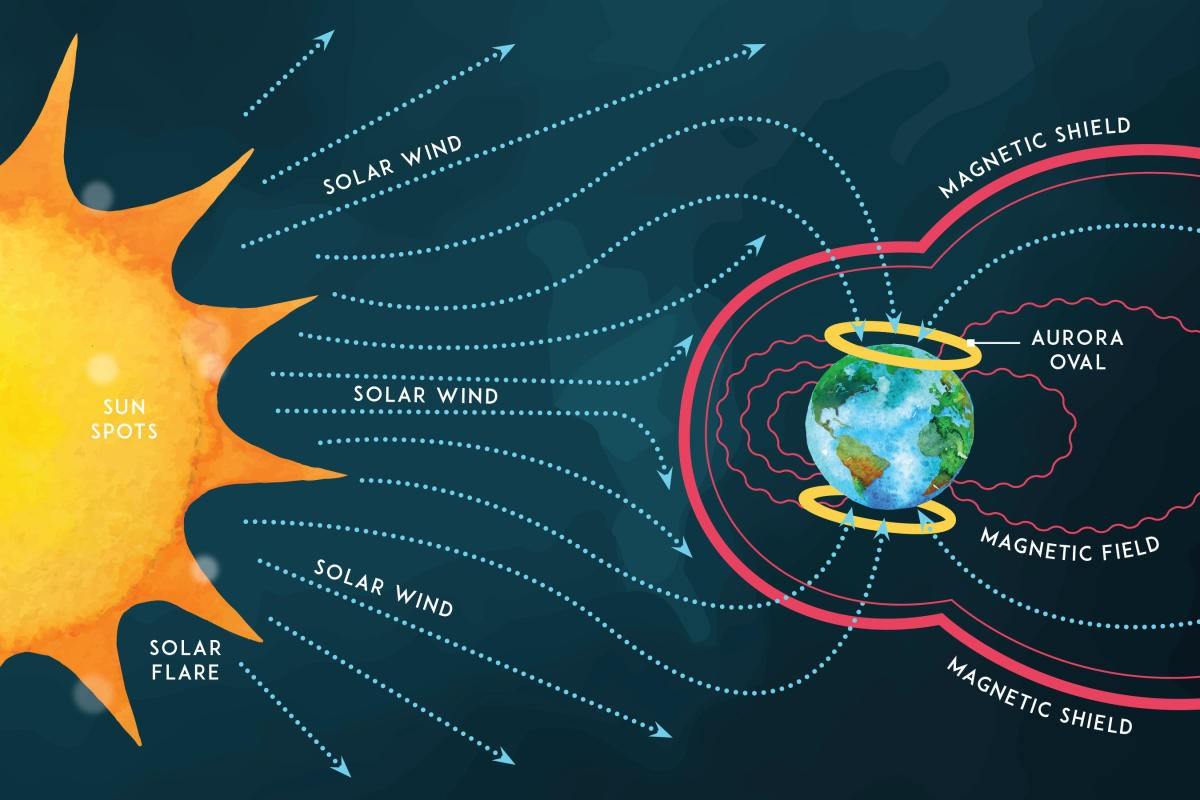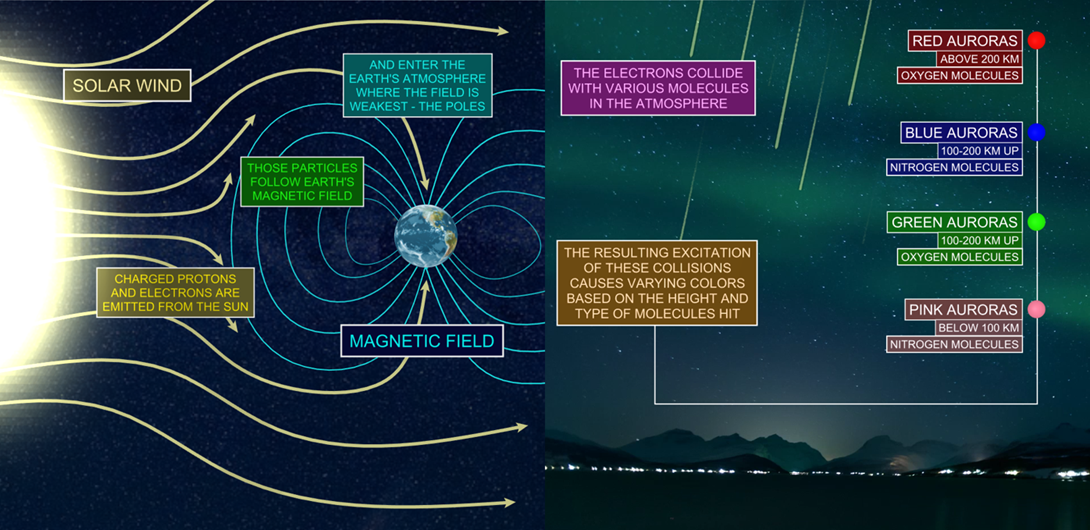Description
 Copyright infringement not intended
Copyright infringement not intended
Picture Courtesy: https://indianexpress.com/article/explained/explained-sci-tech/aurora-lights-india-ladakh-9323390/
Context: The recent visibility of auroras in Ladakh has been linked to increased solar activity and unique space weather events.
Auroras
- Auroras, commonly known as the Northern Lights (Aurora Borealis) or Southern Lights (Aurora Australis), are natural light displays in the sky, predominantly seen at high latitudes near the Earth's poles.
- They occur due to interactions between charged particles from the Sun and Earth's magnetic field.
Solar Processes Involved
- Solar Wind: The Sun constantly emits a stream of charged particles known as solar wind.
- Earth's Magnetosphere: Earth's magnetic field extends into space and forms the magnetosphere, which acts as a shield against solar wind.
- Interaction with Magnetosphere: Solar wind particles interact with Earth's magnetosphere, particularly near the poles where the magnetic field lines converge.

Factors Contributing to Visible Auroras in Ladakh
- Coronal Mass Ejections (CMEs): These are massive eruptions of plasma and magnetic fields from the Sun's corona.
- Solar Flares: Sudden bursts of intense radiation and energy from the Sun's surface.
Sequence of Events
- The recent visibility of auroras in Ladakh was linked to heightened solar activity.
- Solar physicists observed multiple strong solar storms between May 10 and 11.
- These storms originated from active regions on the Sun, such as AR13664.
- The solar storms were characterized by Coronal Mass Ejections (CMEs) travelling towards Earth.
- The CMEs travelled at high speeds (700 km/second) towards Earth.

Interaction with Earth's Magnetosphere
- Impact of CMEs: When CMEs and solar flares interact with Earth's magnetosphere, they disturb the normal space weather conditions.
- Penetration of Solar Particles: Solar particles, including protons and electrons, penetrate deeper into Earth's atmosphere, leading to ionization and the production of visible light.
Aurora Appearance
- The interaction of solar particles with atmospheric gases results in colourful auroral displays.
- The intensity and extent of the solar storms were significant enough to push auroras to lower latitudes, including Ladakh in India.
- The observed red hues in the auroras indicate the presence of high-energy particles interacting with oxygen atoms in the atmosphere.
|
Implications and Hazards of Solar Storms
● Satellite Interference: Intense solar storms can disrupt satellite operations by inducing electrical currents and affecting communication systems.
● Radiation Hazards: The influx of solar particles can pose radiation hazards to spacecraft and astronauts.
● Atmospheric Heating: Solar storms can heat up the upper atmosphere, affecting satellite orbits and causing drag on spacecraft.
|

Conclusion
- The recent visibility of auroras in Ladakh was a direct result of heightened solar activity, specifically strong solar storms and Coronal Mass Ejections (CMEs) originating from active regions on the Sun. These solar events disturbed Earth's magnetosphere, allowing charged particles to penetrate deeper into the atmosphere and produce colourful auroral displays even at lower latitudes. Studying such phenomena helps us understand the dynamic interaction between the Sun and Earth's atmosphere, as well as the potential impacts on technology and space exploration.
Must Read Articles:
AURORA BOREALIS
Source:
Indian Express
Wikipedia
|
PRACTICE QUESTION
Q. Consider the following statements:
1. Aurora is caused by charged particles from the solar wind colliding with Earth's magnetosphere and atmosphere.
2. Green is the most common colour of the Aurora borealis, caused by the excitation of oxygen atoms at lower altitudes.
3. Earth's magnetic field guides charged particles from the solar wind towards the polar regions, where they interact with the atmosphere to produce Auroras.
4. The Aurora australis, or Southern Lights, is the counterpart to the Aurora borealis, occurring near the South Pole.
How many of the above statements are correct?
A) Only one
B) Only two
C) Only three
D) All four
Answer: D
|
https://t.me/+hJqMV1O0se03Njk9





 Copyright infringement not intended
Copyright infringement not intended











